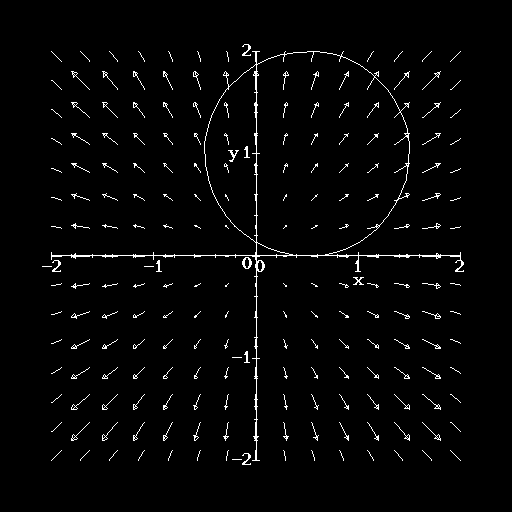To state the answer to this question as easily as possible, circulation is the line integral of a vector field around a closed path. That's it. As such, it is another way to measure the amount of ``swirl'' in a vector field. Often, circulation is noted by a modified line integral:
| (1) |
Example 1. The circulation of the vector field ![]() around the path shown is zero. We can see this by first rewriting the
circulation as a sum of line integrals along each separate piece of the
curve. Thus,
around the path shown is zero. We can see this by first rewriting the
circulation as a sum of line integrals along each separate piece of the
curve. Thus,
 |
(2) |
Now, since the vector field is perpendicular to the path along
C1 and C3, their contribution to the integral is zero. Since the
magnitude of ![]() is the same along C2 and C4 but they are
traversed in opposite directions, we have that
is the same along C2 and C4 but they are
traversed in opposite directions, we have that
| (3) |
so that each of these integrals cancels the other and the total is zero.

Example 2. The circulation of ![]() around the curve C shown below. This curve is broken up into
three segments:
around the curve C shown below. This curve is broken up into
three segments:
![]()
![]()
![]()
We can break the integral up into three pieces: ![]() Calculating each
piece separately, we find:
Calculating each
piece separately, we find:
![]()
![]()
![]()
![]()
![]()
Thus, the total circulation of ![]() around this curve is the
sum of these values, namely,
around this curve is the
sum of these values, namely, ![]() .
.
Example 3. What about the circulation of a conservative
vector field? This is obviously zero since ![]() so
that
so
that ![]() and the curve C starts and ends at the same spot (P = Q.)
and the curve C starts and ends at the same spot (P = Q.)